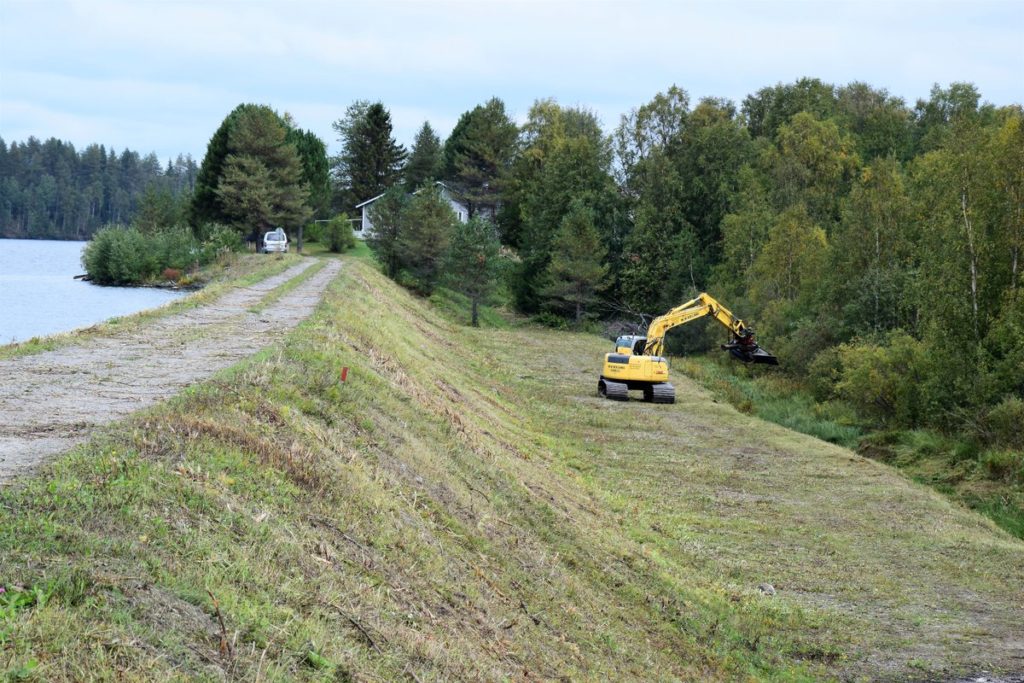Fish and aquatic environment
Hydropower production alters the aquatic environment. We therefore work persistently in co-operation projects to develop aquatic environment. We are committed to furthering the restoration of the natural migration patterns of migratory fish with extensive co-operation, step by step. We believe that restoring the migratory fish and hydropower production can co-exist.
We are committed to restoring natural migration patterns in cooperation with other operators. The task is enormous, and requires extensive expertise and commitment from the parties involved, as well as versatile methods. Channels for upstream and downstream fish migration are important, but it is just as important to plant fish and spawn, transfer fish, and restrict and ban fishing.
We strongly believe that the best outcome will be achieved step by step with extensive cooperation.
An assisted natural cycle of migratory fish has already been created in the Iijoki river as a result of the cooperation. The lowermost power plant at Raasakka has a Fishheart fishway that boosts upstream migration, and the uppermost power plant at Haapakoski has Finland’s first downstream migration route for migratory fish fry. With their help, fish and fry can be transported past power plants. By researching and developing the impacts, it is possible to obtain valuable research data and more in-formation to be used when building the next bypass routes.
In addition, the possibilities of using an old riverbed as a migration route and breeding area for migratory fish are being developed and modelled in cooperation with other parties at Raasakka. The ultimate solutions are being discussed with stakeholders.
Extensive migratory fish restoration cooperation in the Iijoki river
In 2022–2024 the Lohi Iijokeen (Salmon to Iijoki) project continues the extensive cooperation in migratory fish restoration. The project will produce, among other things, information on the functionality of the Haapakoski downstream migration route.
We are active in the extensive Salmon to Iijoki 2024–2026 cooperation project, which continues the previous Salmon to Iijoki 2022 – 2024. The project includes e.g. study of smolt at Haapakoski and Livojoki river, development of Haapakoski downstream migration route, transporting smolt and fish and planting fish fry.
A previous, Iijoki river migratory fish project in 2020–2022, included e.g. building a downstream migration fishway for smolt, as well as catching equipment, in Haapakoski. The project also promoted a fishway construction at Raasakka.
We take part in the Iijoki Agreement for the years 2024–2028 which implements the Iijoki waterway vision 2030 and action plan. The joint project includes e.g. restoring drained swamps and undertaking other water management tasks in drainage basins. The Agreement was first signed in 2019.
We are also participating in joint projects in the Kemi-Ounasjoki river basin to restore migratory fish.
We have been actively involved in and have provided co-financing for studies and joint projects that have examined the prerequisites of the natural migration patterns of migratory fish since 2008.
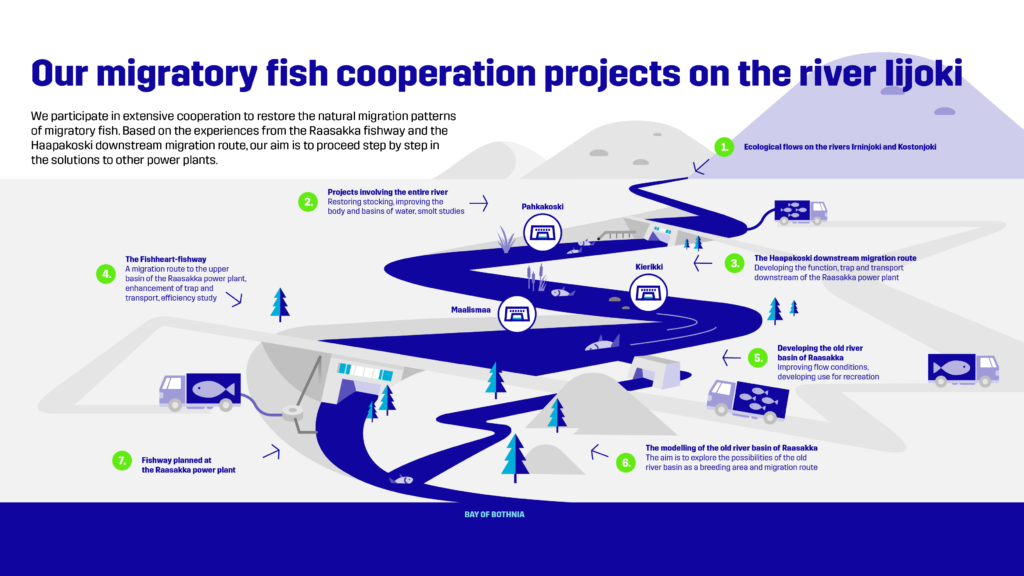
Fishways
The hydraulic fishway Fishheart will be in use at the lowermost power plant on the Iijoki river, PVO-Vesivoima Oy’s Raasakka power plant, from 2023 to 2025. The system will be used not only as a migration solution for fish to bypass the Raasakka power plant, but also to improve the efficiency of the transport of fish. Fishheart in Raasakka is the first ready-to-use solution at the lowermost power plant on a harnessed river flowing into the sea. Its operation will provide valuable additional information on the efficiency of the system as part of a solution to migratory fish issues in harnessed rivers.
A fishway has been planned at the Raasakka power plant in the Iijoki river. The fishway plan was part of the Iijoki river migratory fish project in 2020 – 2022. With Metsähallitus, we applied for a permit in 2017. The authority granted permissions to build fishways in Raasakka in December 2020. Appeals against the permit were processed in court proceedings.
There has been one fishway at Pohjolan Voima’s power plant Isohaara in the Kemijoki river since 1993. Isohaara is the lowermost power plant along the Kemijoki. There is also another fishway in Isohaara, the Vallitunsaari fishway, which was completed in 2012. Another fishway is located in the Iijoki headwaters, at the dam of the Kostonjärvi regulation lake.
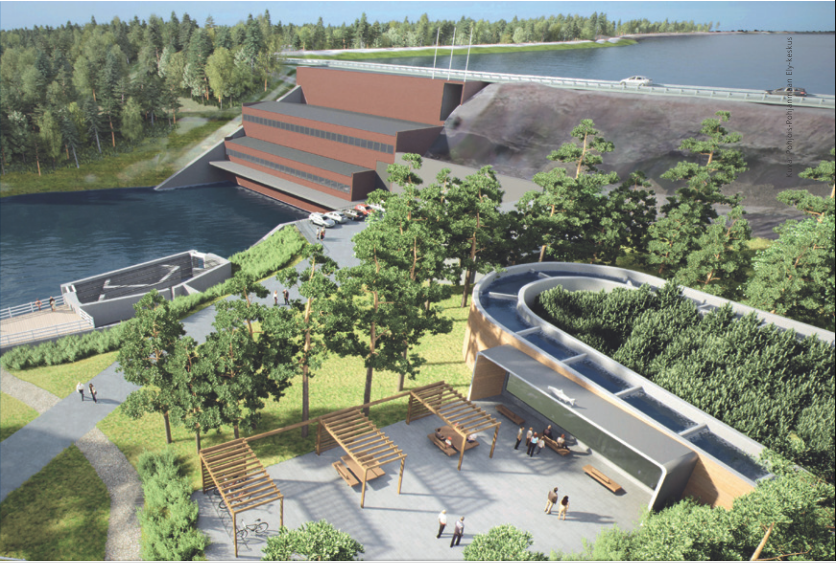
Our affiliate company Tornionlaakson Voima, together with the municipalities of Pello and Ylitornio received permission to build two natural fishways at Portimokoski rapids on the Tengeliönjoki river. First of the fishways was built in autumn 2024, and the second one was built in 2025. Thus, the fishways have opened up a migration route for migratory fish and over a 1,000 km of waterways suitable for spawning above the Lake Portimojärvi.
Downstream migration
At the Haapakoski power plant in the Iijoki river, the downstream migration of smolt, migratory salmon fry, is being studied. Finland’s first downstream migration fishway was completed at Haapakoski in 2021.
In the summer of 2019, a guide fence for smolt was installed at Haapakoski. It helps to guide young fish migrating to the downstream migration fishway.
The guide fence and the downstream migration fishway at Haapakoski form Finland’s first downstream migration route.
The Natural Resources Institute Finland has been studying the functionality of the constructions.
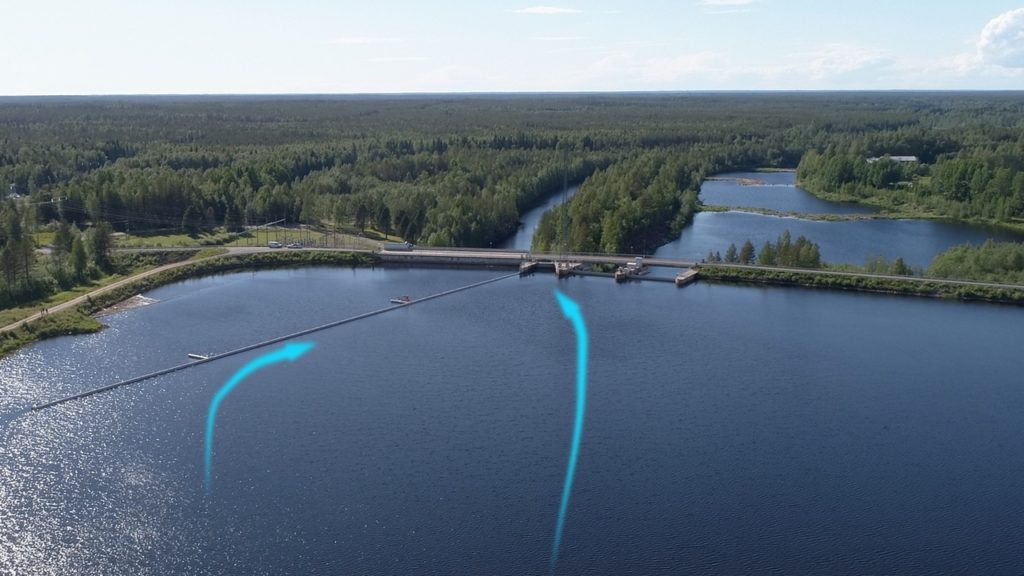
The old Iijoki riverbed in Raasakka
The aim of the Raasakka old riverbed modelling project is to study the possibilities of using an old riverbed as a migration route and breeding area for migratory fish throug modelling. The projct is realised in cooperation with other parties at Raasakka.
Measures to return migratory fish to the old natural riverbed of the Iijoki river at Raasakka continue with a cooperation project in 2024-2025. The project continues the efforts to restore the natural cycle of migratory fish and river lampreys and to improve the recreational value of the area.
The joint development project for the old Iijoki riverbed in Raasakka has been ongoing since 2017. The project has aimed to facilitate the upstream migration of fish and their reproduction, as well as to improve the area’s recreational use. The project included studies of water quality, the construction of swimming places and other recreational areas, the cutting of horsetail, and the improvement of boating routes.
The project has generated promising results on the natural reproduction of migratory fish in the old Iijoki riverbed in Raasakka.
Fish stock management and transferring fish
Annually, we stock more than three million young fish, transfer breeding fish and river lampreys, and support fishing associations in fish stock management.
In the Iijoki and Kemijoki rivers, our obligations for fish stock management are the most extensive in Finland. In the Iijoki river, we are responsible for stocking fish in the river and ocean areas, as well as in two lake regions. In addition, we handle 17 % of the fish stock management in the main channel of the Kemijoki river and the ocean area, as well as in one lake region. Annual fishery fees are also paid in the Iijoki headwaters and in the areas of Irnijärvi and Kostonjärvi regulation lakes.
Voimalohi Oy, which we own with Kemijoki Oy, grows the fish we need for our statutory stocking and takes care of the stock management with local operators across our operating area. Monitoring provides information about the effects of fish stock management efforts.
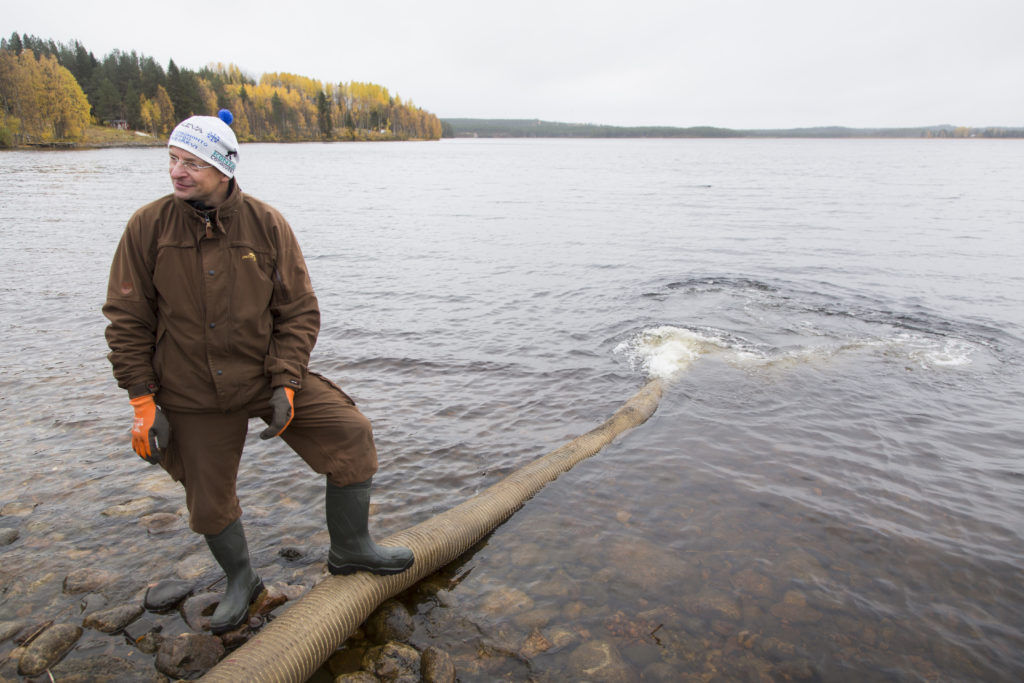
Ecological flow
Annual ecological flows to the Kostonjoki and Irninjoki rivers have been agreed with the municipality of Taivalkoski and the authorities. In the Irninjoki river, we have restored appropriate spawning beds for trout and grayling.
Based on the monitoring results, the ecological flow in the Irninjoki river was further increased in 2020.
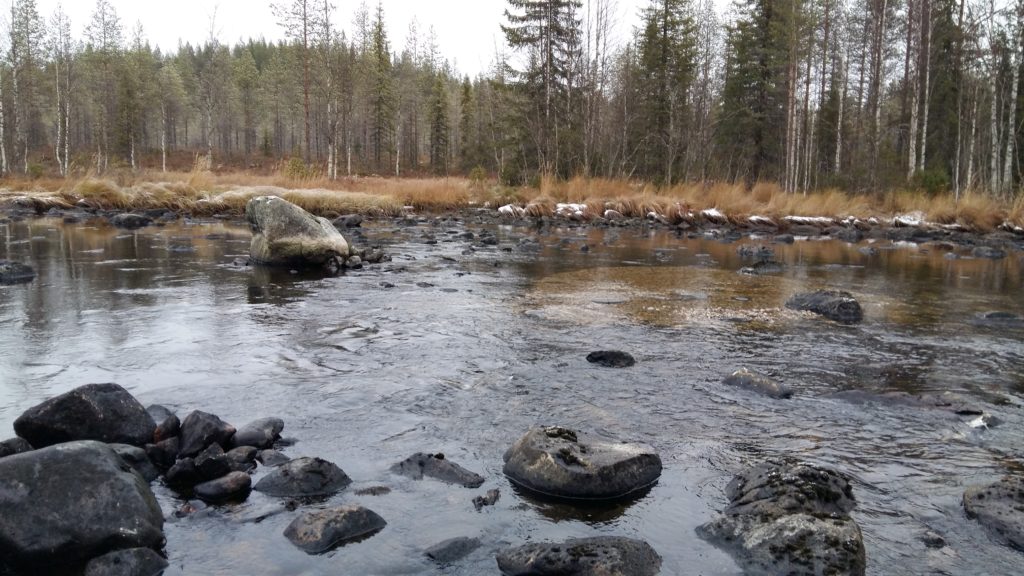
Applications for amendments of the stocking and fish stock management obligations
The Lapland Centre for Economic Development, Transport and the Environment submitted applications for amendments of the stocking and fish stock management obligations in the Kemijoki and Iijoki rivers. in 2017. In July 2024, the Regional State Administrative Agency for Northern Finland issued its decision on the applications for amendments. With its decisions, the Regional State Administrative Agency
approved some of the requests and rejected others. The decisions are not final.
Regulation of waterways
In regulating waterways, the aim is to generate hydropower, prevent flooding and promote waterway traffic, the recreational use of the waterways and water supply. The regulation of waterways always requires a permit in compliance with the Water Act. The permit is granted by the Regional State Administrative Agency. Various Centres for Economic Development, Transport and the Environment monitor compliance with the permit conditions.
Regulation is constantly being developed with the authorities and local residents to mitigate environmental impacts.
Environmental management and protection of shorelines
Flooding and regulation cause erosion of shorelines. The shorelines of regulated lakes and rivers are protected against erosion with supportive structures. Environmental management also includes the clearing of shorelines, as well as earth dams and submerged dams.
By the end of 2024, about 368 kilometres of shoreline had been protected against erosion, while over 1,000 kilometres of shoreline had been cleared for landscaping purposes.
